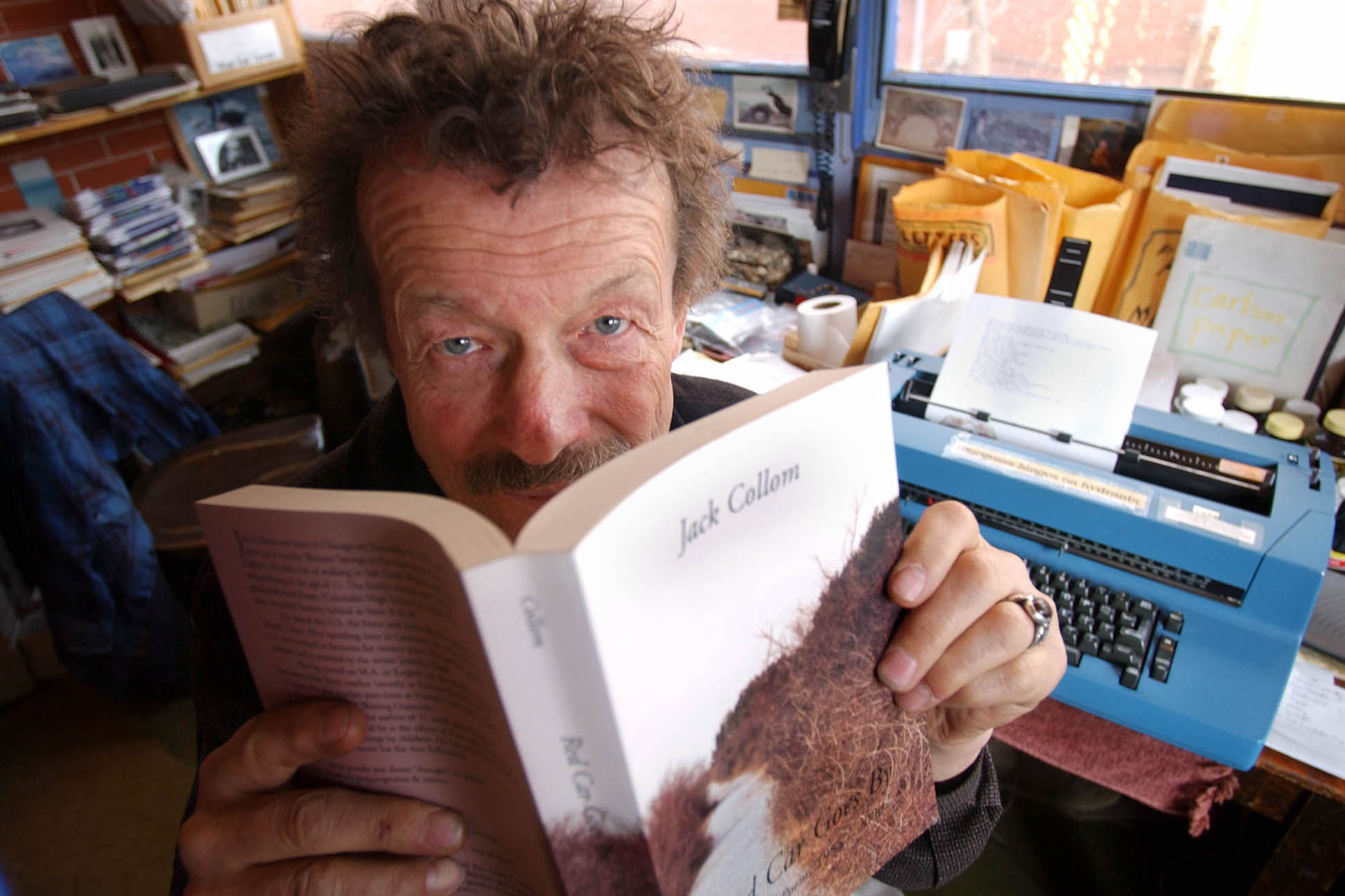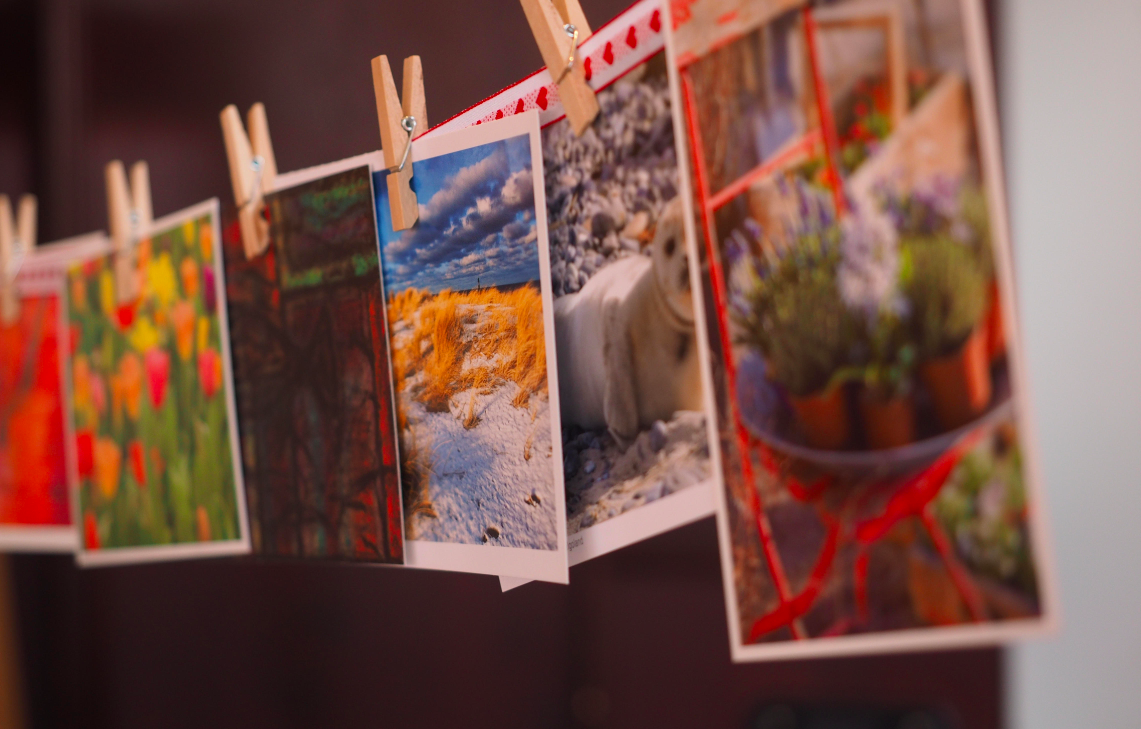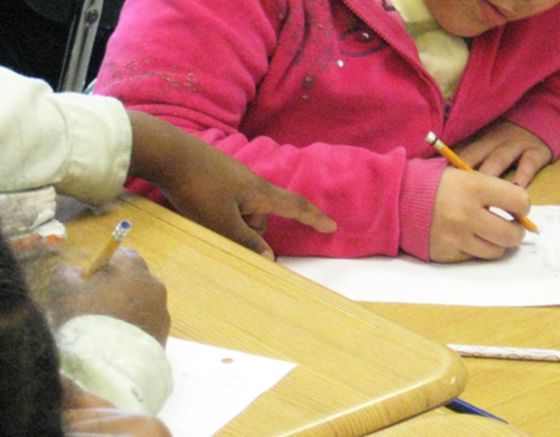This lesson is part of Writing Our Way Through: clear, fun, and engaging “lessons” for writing at home with young people.
Author/Teaching Artist: Susan Karwoska
Age Range: 1st grade and up
Materials: Family photographs or images clipped from magazines or a collection of postcards, along with paper and pencils/pens.
Overview
In the following lesson you’ll take a close look at family photographs (or other images—postcards, images in magazines—whatever you can find around your home will do!) and use your observations to try your hand at a brief haiku-like poetic form called the lune.
I call this exercise the Lune Link and it is essentially an invitation to look at something with focused attention, or, as the poet Allen Ginsberg wrote, to “Notice what you notice.” What do we see when we slow down and really look? Close observation is at the heart of imaginative writing and this exercise offers us an engaging way to put our observations—the many surprising things we see when we pay attention—into words.
The Steps
1. Spread a selection of family photographs, postcards, or images clipped from magazines on the table in front of you. There should be more images than there are participants so that there are extras on the table after everyone has chosen. Ask everyone to select an image that catches their eye. Emphasize that they shouldn’t overthink the choice—they’ll have a chance to choose another image later if they wish.
2. Explain that you are all going to write poems, in a poetic form called the lune, about the image you have chosen. The lune is a wonderfully simple form—three words in the first line, five words in the second line, and three words in the third line. That’s it! It’s easy for even very young students to grasp, but its brevity also means that every word counts.
Write out the word on a sheet of paper, L-U-N-E, then draw an outline of the form so everyone can see it. Three lines, with blank spaces where the words will go: three blank spaces, then five, then three, like this:
———— ————- ————-
———— ————- ————- ———— ————-
———— ————- ————-
3. Ask all participants to look at the image they’ve chosen. What do you see? If there are people in the image, you might look at their faces or the way the picture has captured their movement. What are these people doing? What they are wearing? What’s in the background? If the image has no people (and also if it does) see what other details in the photo “pull you in.” It could be something small or something about the image as a whole.
Remember, there are no rules or “shoulds” to what you notice! Everything is fair game.
Remember, there are no rules or “shoulds” to what you notice! Everything is fair game. The goal here is to shine a light on details in the photos or images that strike you, using your powers of observation and your imagination to deepen and enrich these observations. And if something in the image you are looking at suggests a story, go ahead and run with it! In other words, you should feel free to see not only with your eyes but also with your mind.
4. Once you’ve spent a minute or two studying your photo or image, it’s time to get to work on your lunes. Ask those participating to pick something in the photo or image and write about it, in the form just described. Because this form is so brief, it helps to focus in on just one thing. If you have more to say, you can always write another lune!
If you think it would help to give everyone an example of what this looks like, you can share the lunes by Jack Collum, below, or some student lunes, including this one by one of my fifth grade students about a photo of New York City:
Little cars below
Look! These taxis look just
like yellow ants!-Matteo
And this one, written by a third-grader after he studied a photo of a lunar eclipse:
The jealous sun
finally controls the moon
A blue lollipop–Nick
5. Once the writing starts you are bound to be asked, Does the poem have to be 3 words / 5 words / 3 words? Can’t we use an extra word or two? It’s tempting to fudge a little and add an extra word here or there in order to say what you want to say, but I think it’s good to be firm about this, at least at the start, because the restrictions of the form challenge us to rethink what we want to say, and how we might say it. Many of the best student poems I’ve seen written in response to this exercise were borne out of the unusual and/or felicitous word choices the form obliges you to make.
Many of the best student poems I’ve seen written in response to this exercise were borne out of the unusual and/or felicitous word choices the form obliges you to make.
6. Ask everyone to try to write at least two lunes about each photo or image, more if the spirit moves you. When you’re done with an image, you can trade it in for another one if you want to keep going. For very young students, one or two lunes will probably be enough. With older or more proficient students you might want to teach them the poetic term “enjambment,” which is a fancy way of describing how each line in a poem does not have to be a complete sentence but can continue on into the next line. Here’s an example of this, by a fifth-grader writing about a photo of Times Square:
Big shiny billboards
with all your ads. You
brighten the dark–Tim
You could also share with participants that they might choose to string together a series of lunes to make a longer poem, as in this example by a fifth-grader.
Trees of Paris
give their cool shade to
the many tourists
In the sunset
friends going home all talking
with each other–Iréne
Of course it’s also fine to have each lune stand on its own. Let your inspiration be your guide!
7. After ten minutes, or when the participants seem to be winding down, offer everyone the chance to share what they’ve written while displaying the image or photo that inspired it. And if any of the participants wants to continue writing about a certain photo or image, or to choose a new one to write about, encourage them to do so!
Literary Terms, Forms, and Devices: Lune, Enjambment.
Acknowledgments & References:
- The Lune Link in Spellbound: The Art of Teaching Poetry, edited by Matthew Burgess. Teachers & Writers Collaborative, 2019
- The Lune Link: Illuminating Classroom Content with Flashes of Poetry at poetryfoundation.org
- Using the Lune to Jumpstart the Essay by Melanie Maria Goodreaux“
- “Cosmopolitan Greetings” by Allen Ginsberg

Mentor Texts:
Here are two lunes by Jack Collum, the poet who adapted the lune to this 3-5-3 word form.
Barbecue under snow
Waiting for winter to end
So am I
Little blue egg
Covered in dirt and feathers
Crack and fry
Student Poems:
On a photo of an explorer climbing Mount Everest
Tough spiky snow
Scary wind in the air
Me, like nothing–Eli
On a photo of immigrants at Ellis Island
Everyone is scared
Everyone is staring at something
With great surprise–Ashley
On a photo of the wreck of the Titanic
The dead Titanic
The perfect home for fish
Its new passengers–Truls
Susan Karwoska is a writer, editor, and teacher. She is the recipient of a New York Foundation for the Arts (NYFA) Fellowship in Fiction; a Lower Manhattan Cultural Council Workspace residency for emerging artists; and residencies at the Ucross Foundation and at Cummington Community of the Arts. From 2005-2014 she was the editor of Teachers & Writers Magazine and currently serves on its editorial board. She is also on the board of the New York Writers Coalition, and has served on NYFA’s artist advisory board. She writes and edits for a variety of publications and organizations, works as a writer-in-the-schools, and lives in Brooklyn, New York, where she is at work on a novel.



One response to “The Lune Link”
[…] The Lune – Simple poetry for young writers […]